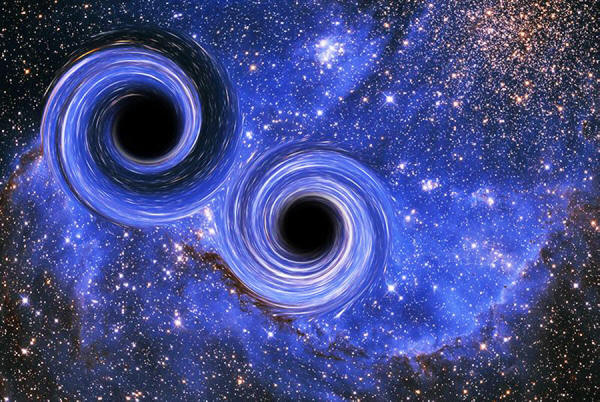|
from
Nature Website
Science
Photo Library could enable LIGO to spot one black-hole merger per hour by the mid-2020s...
Starting around 2023, the
Laser Interferometer Gravitational-Wave Observatory (LIGO)
will undergo its most significant upgrade since 2015, UK and US
funding agencies announced on 14 February.
The upgrades at LIGO's
two sites, in Washington state and Louisiana, will include the
addition of a 300-meter-long, high-vacuum optical cavity. That will
help scientists to manipulate the quantum properties of the lasers
at the heart of LIGO's detection system, and cut down on noise.
LIGO has been undergoing
periodic improvements, and is now about to reopen after an upgrade
designed to increase its sensitivity by 50%.
Souped-up system
If all goes to plan, LIGO will be able to detect neutron-star mergers that occur within 325 megaparsecs (around 1 billion light years) of Earth, says Ken Strain, a physicist at the University of Glasgow, UK, who leads a consortium of British universities that are expected to receive most of the UK money.
That would nearly double
the design sensitivity of 173 megaparsecs that LIGO expects to reach
before the ALIGO+ upgrade.
For example, reducing noise will enable researchers to tell how the black holes were spinning before they merged, which can provide clues to their history.
They do so by bouncing laser beams between pairs of mirrors at the ends of each arm, and then making the two beams converge on a centre point and overlap. In the absence of gravitational waves, the beams' electromagnetic oscillations cancel out.
But if space-time is
disturbed and the arms change length, the laser beams no longer
cancel each other out and a sensor begins to detect light.
LIGO scientists have
developed elaborate techniques to dampen these sources of noise, and
to extract signals from any noise left over.
LIGO's squeezed-light system will reduce fluctuations in the number of photons that reach the light sensor, but increases how much the beams push the mirrors around.
Like the air in a
partially inflated air mattress, the quantum noise cannot be
completely eliminated, only shifted around.
Other improvements will
include new mirrors with state-of-the-art coatings, which is
expected to reduce thermal noise fourfold.
|


